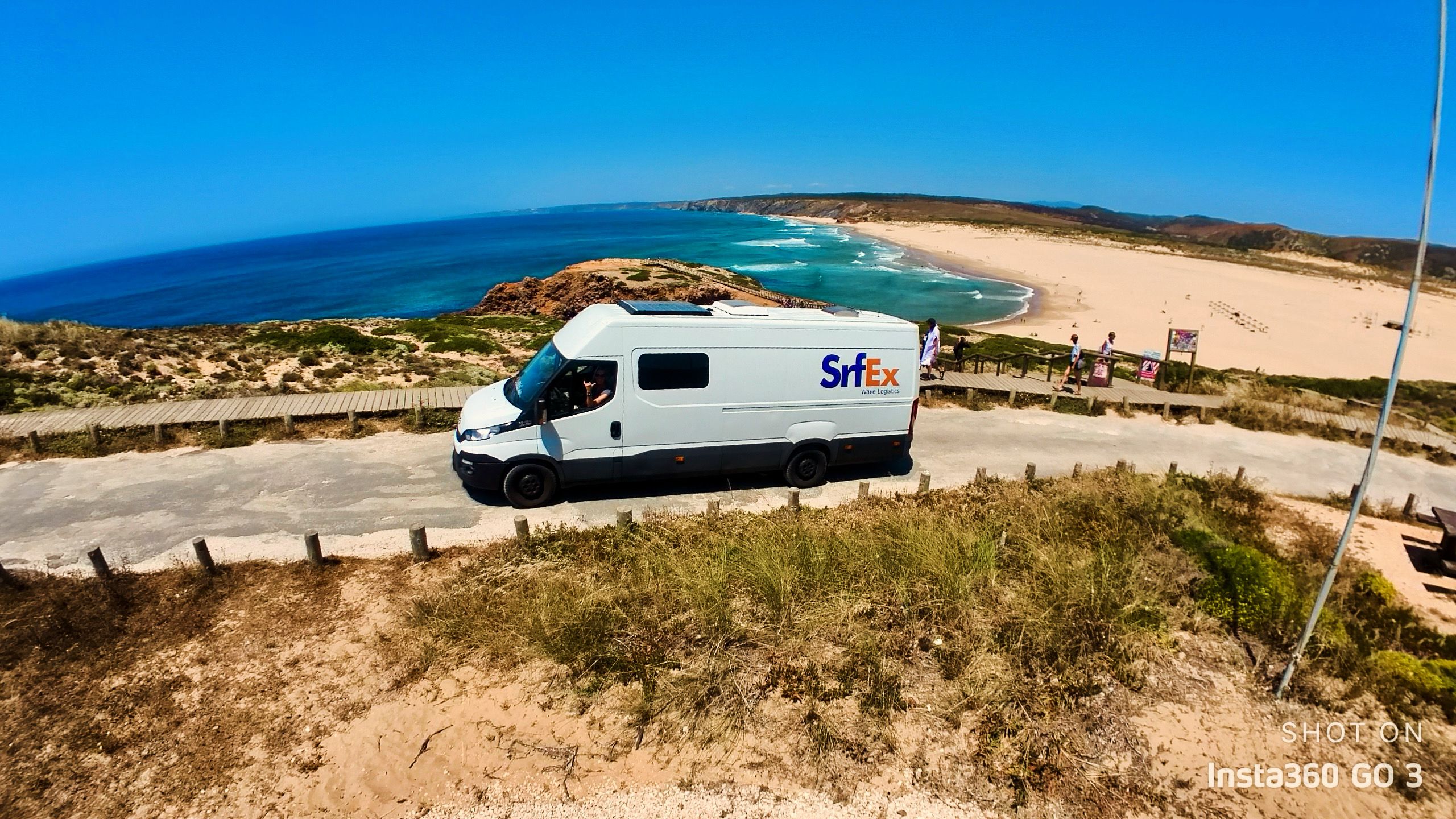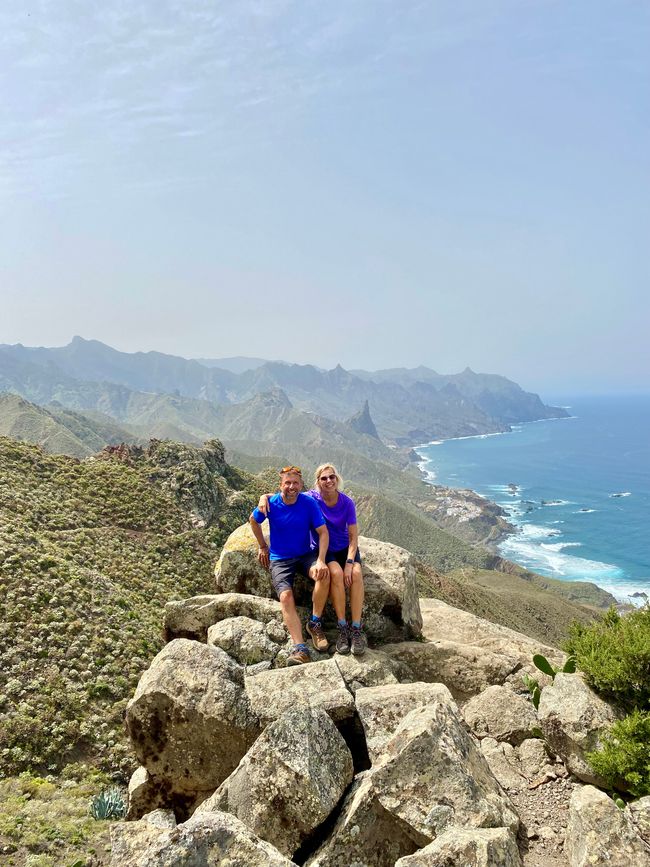
Coastal Nomads - Suzi, John & Betty
vakantio.de/coastal-nomads-suzi-john
Beautiful Porto, delicious wine, good friends and yet: Adeus Portugal!
Објавено: 01.08.2024
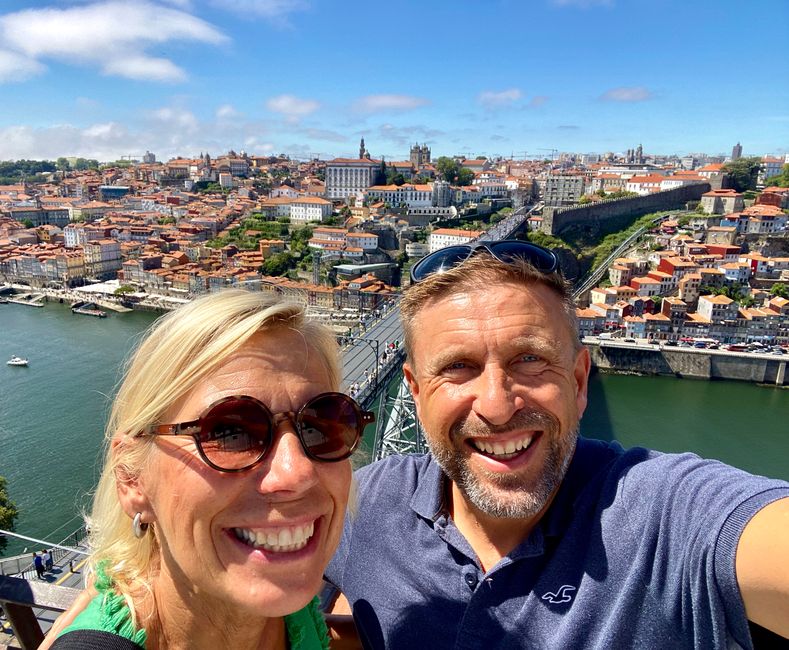

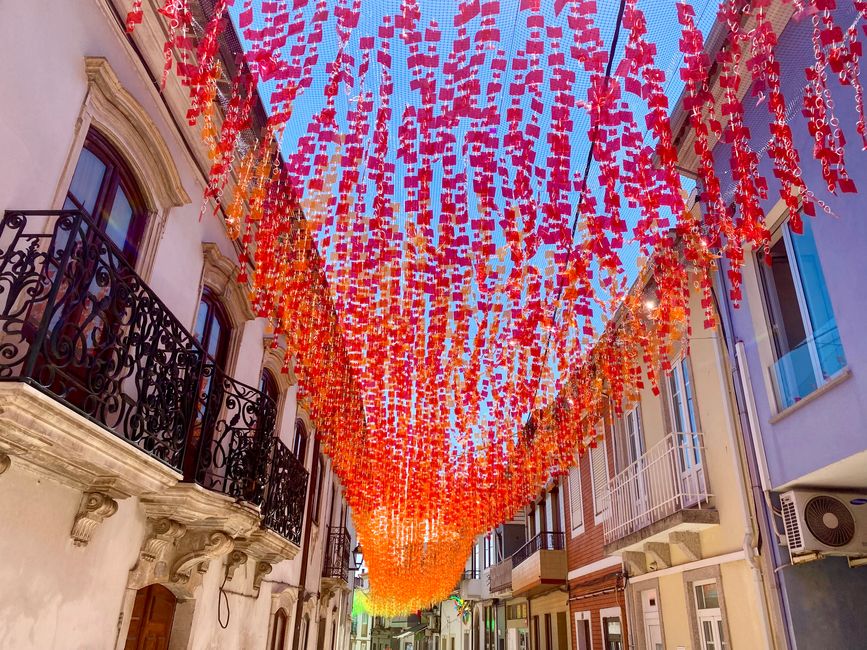
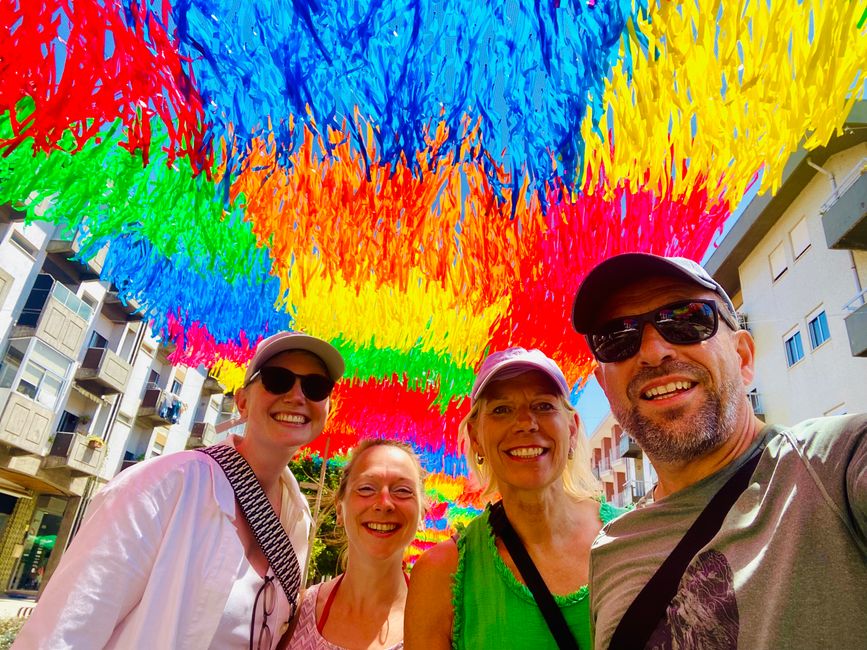
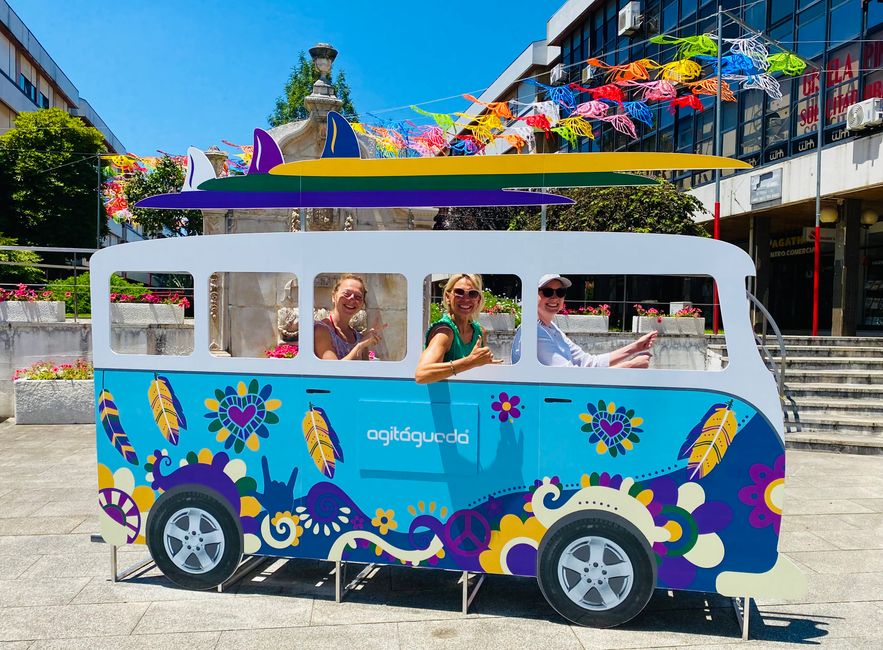
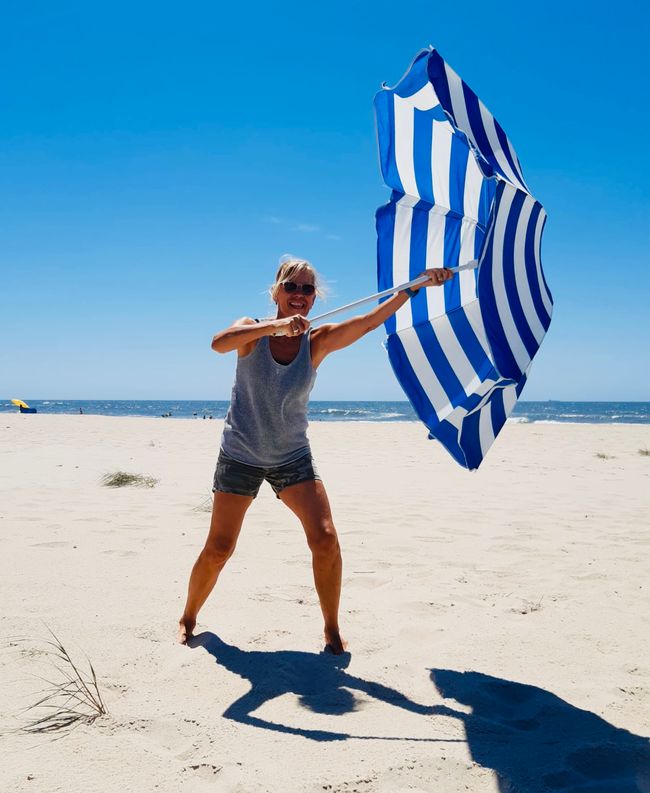
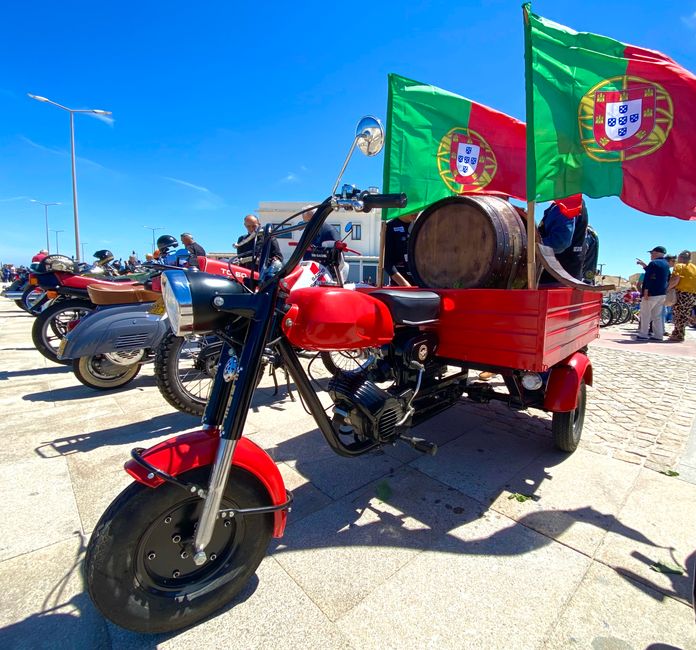
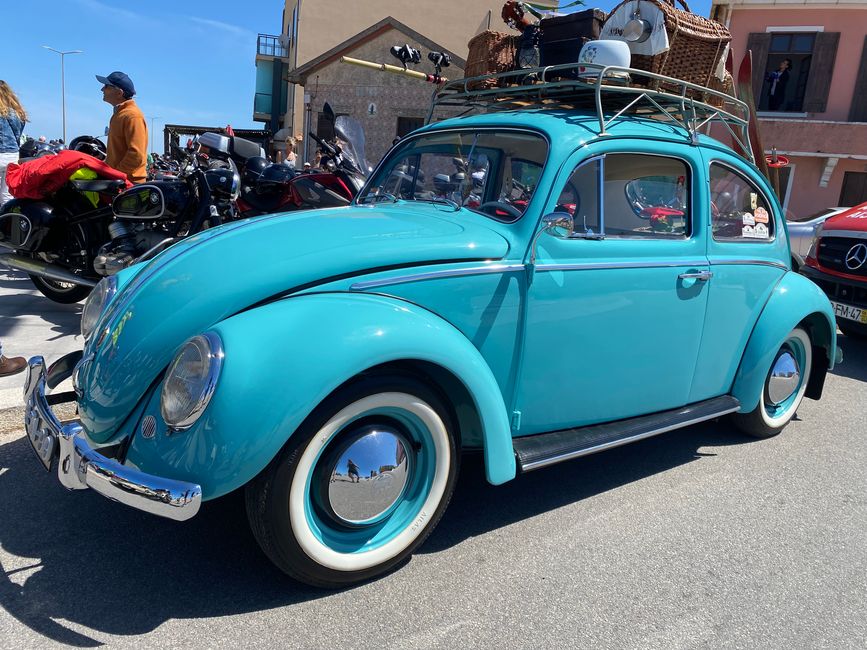
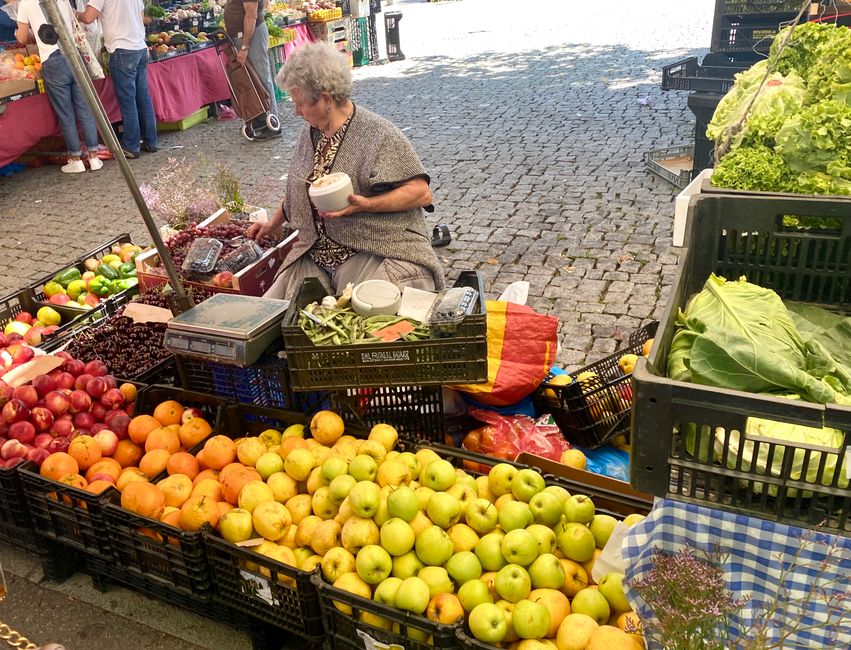
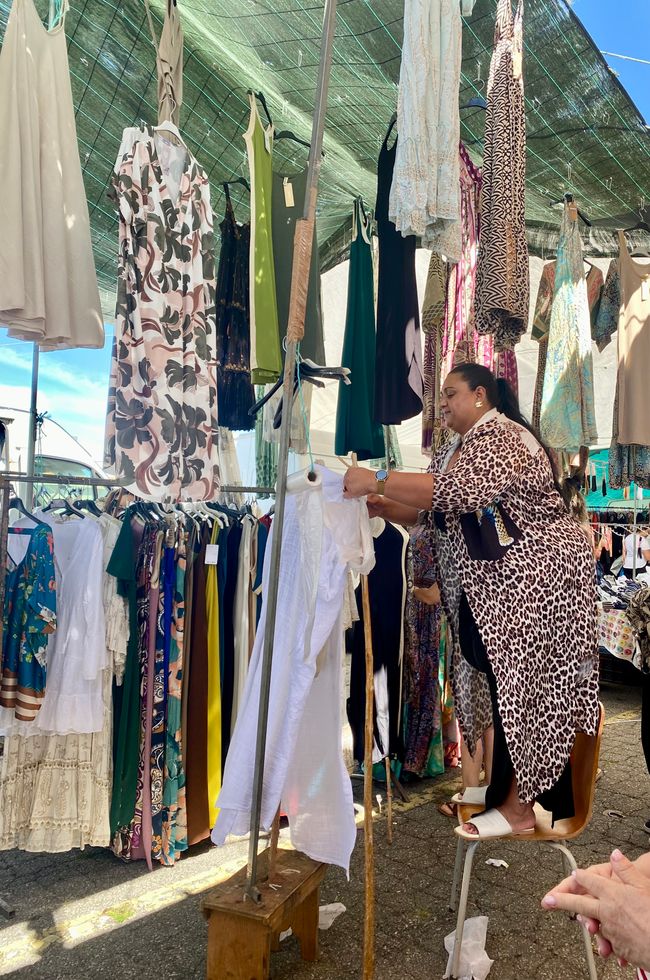
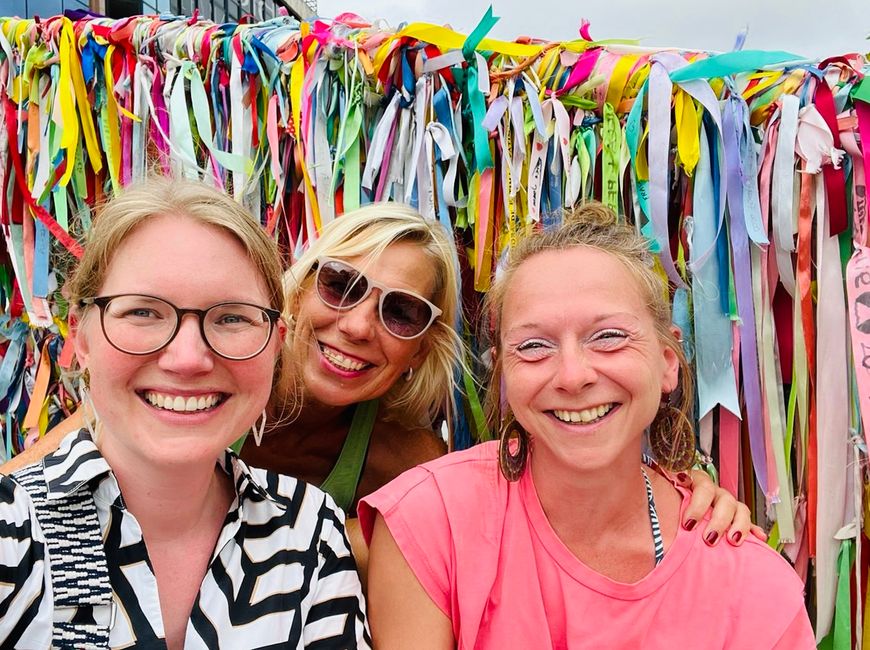
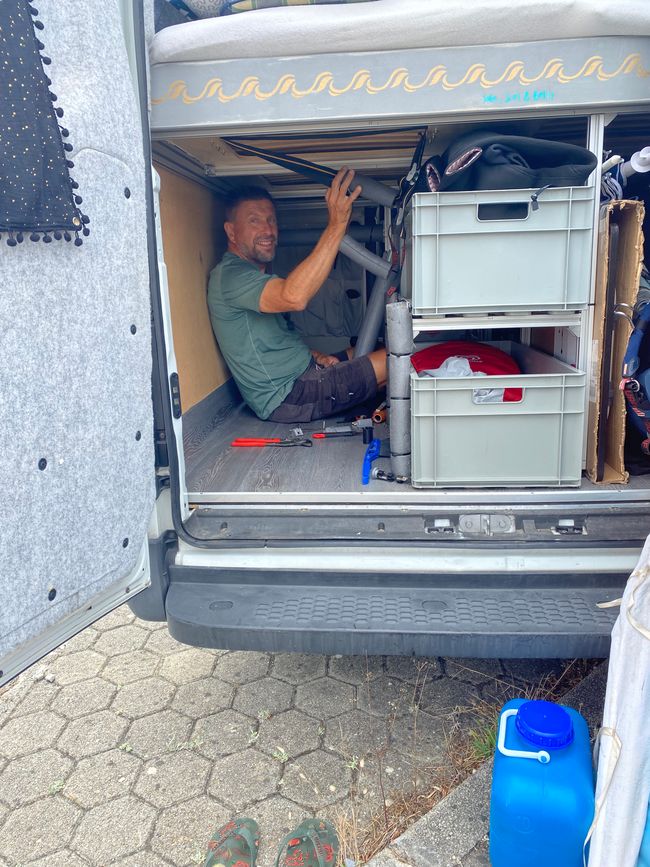
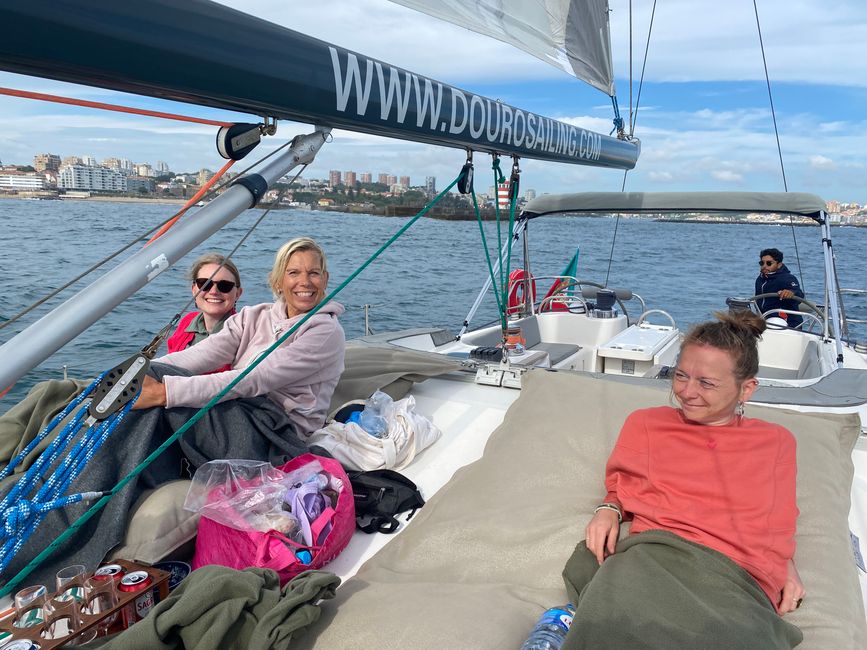
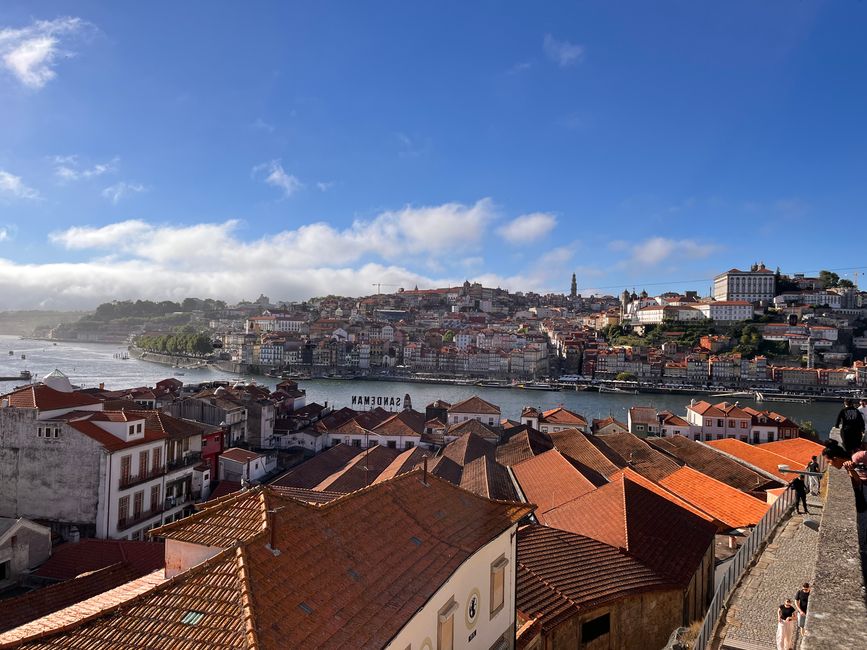
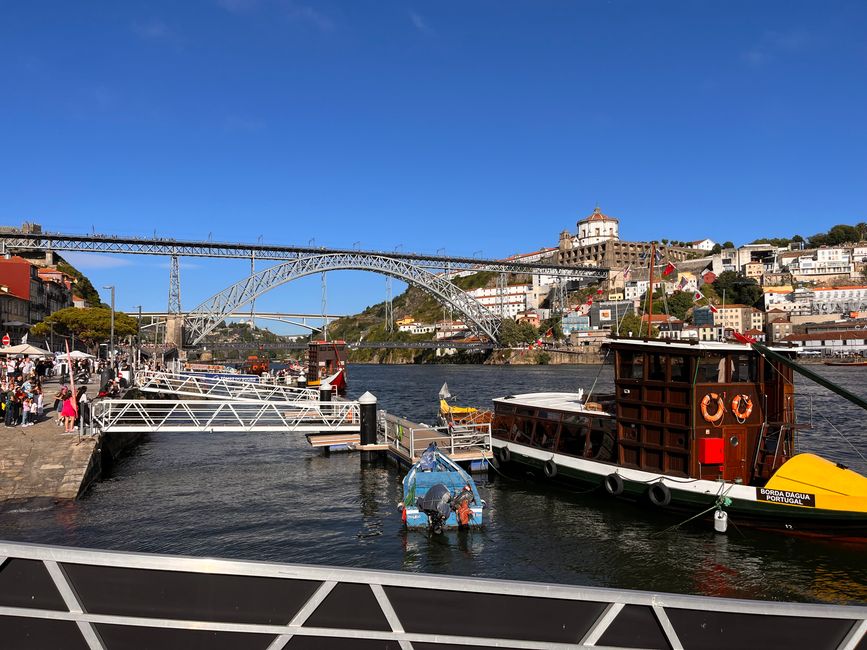
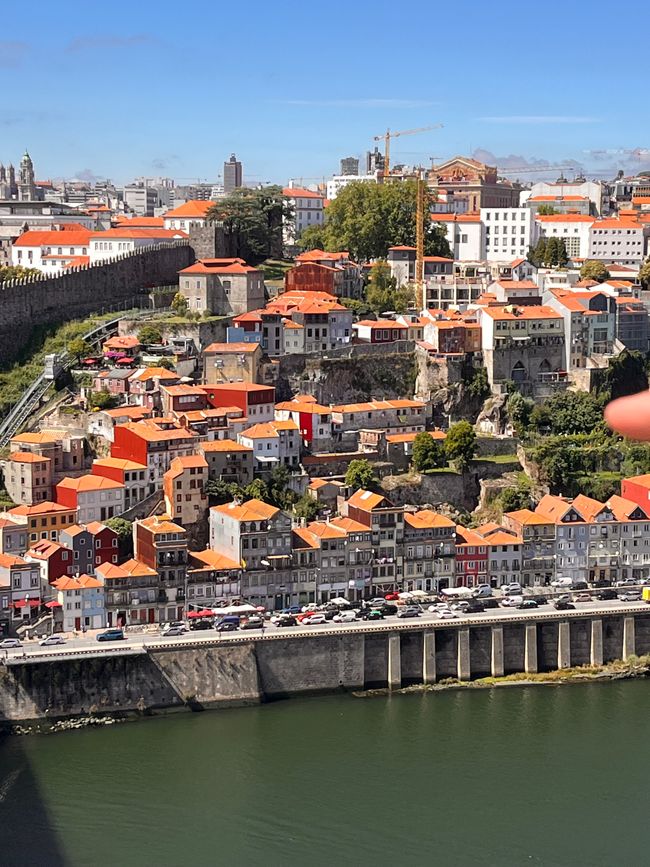
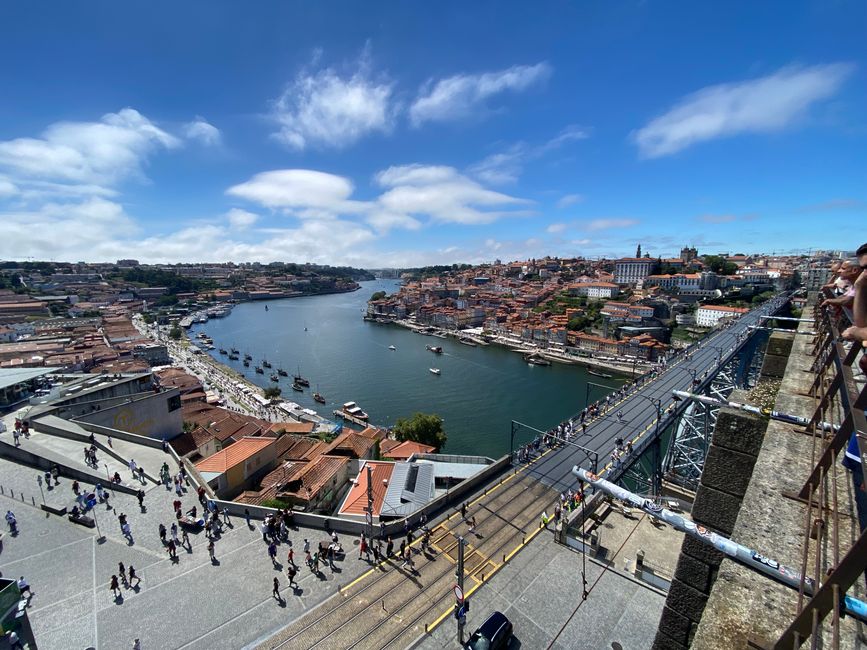
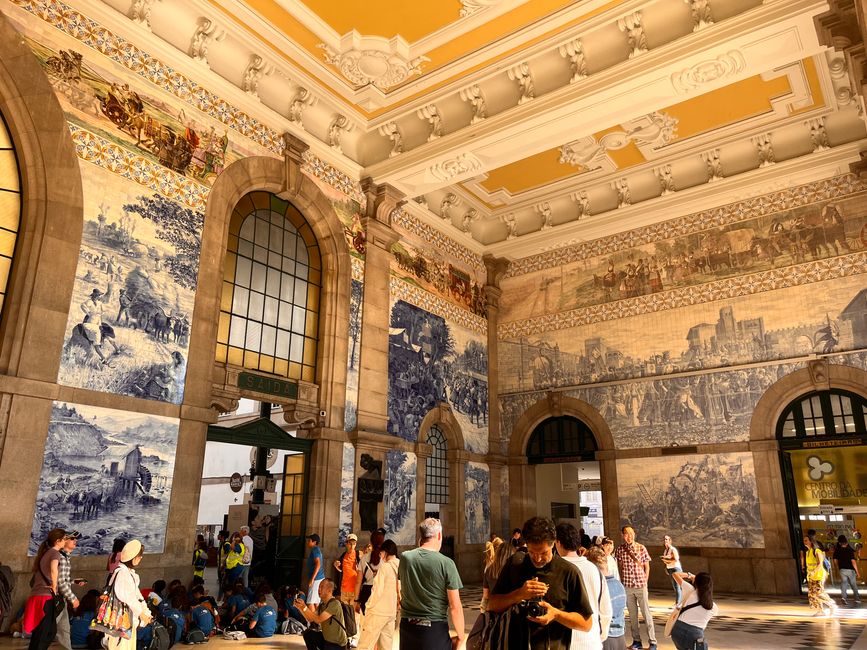
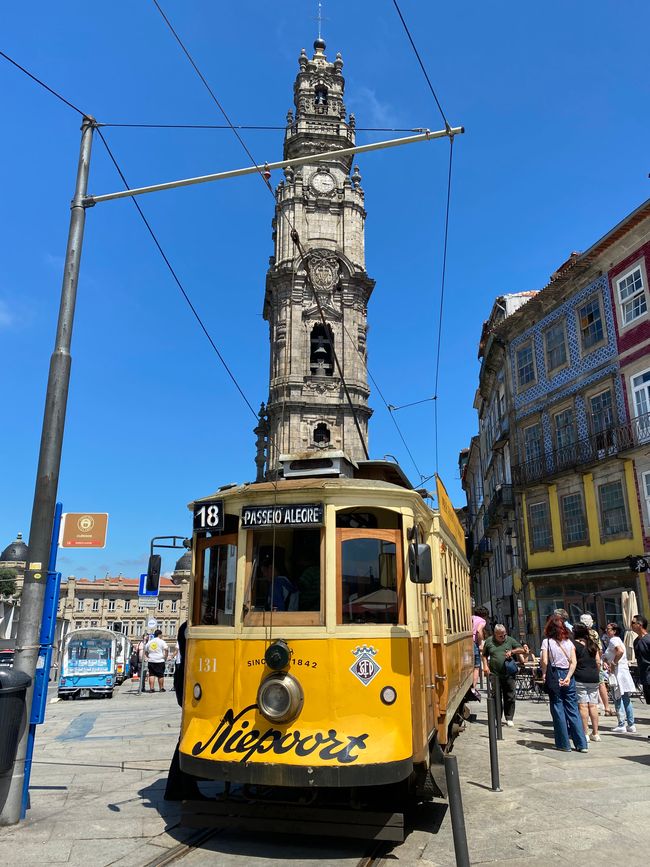
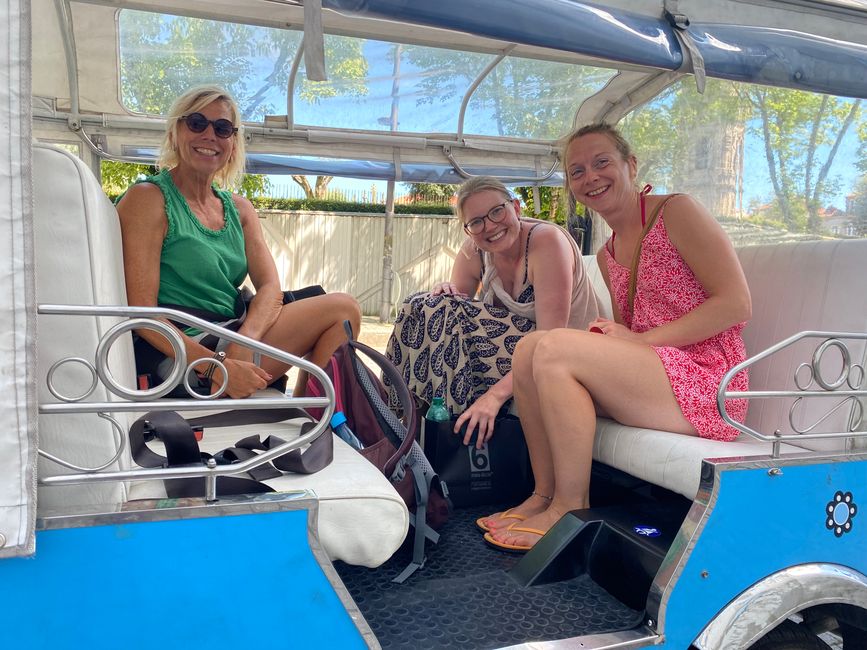
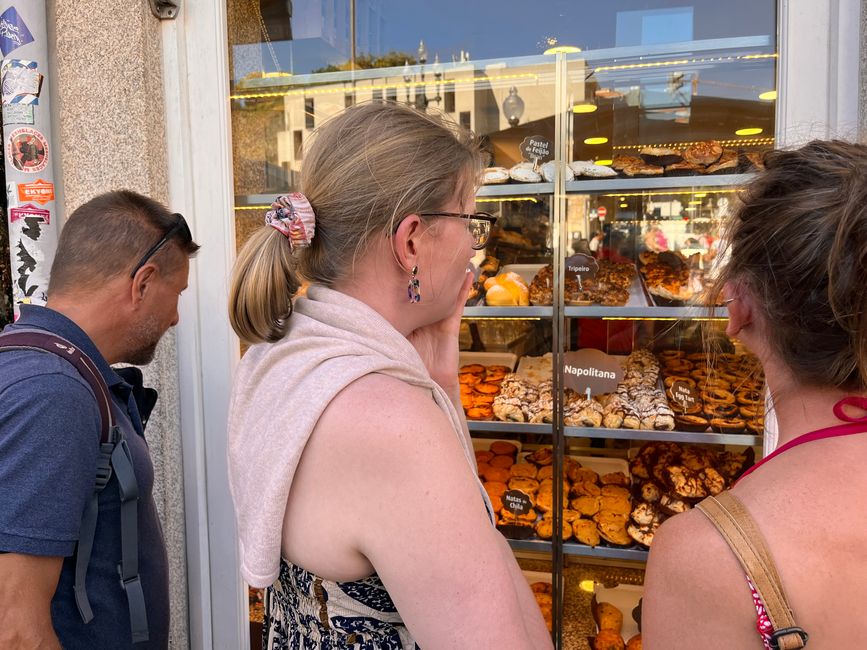
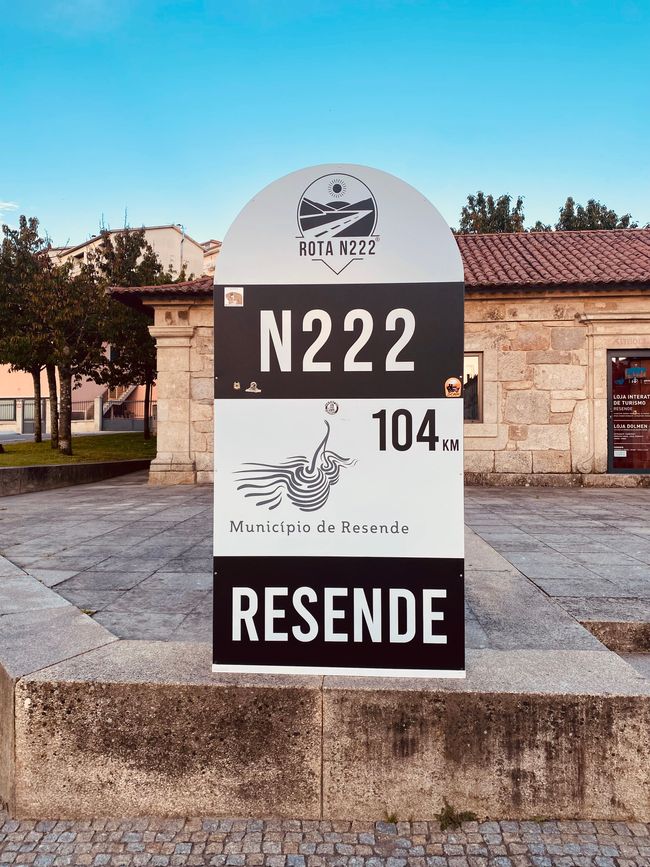
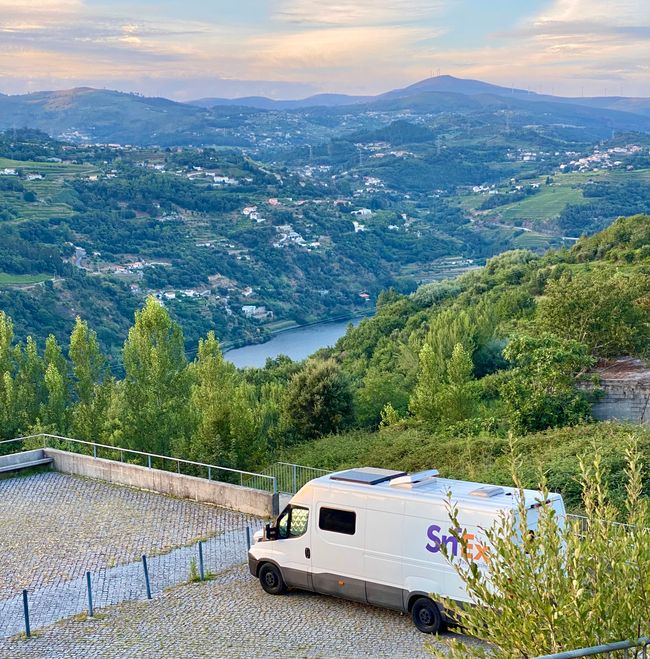
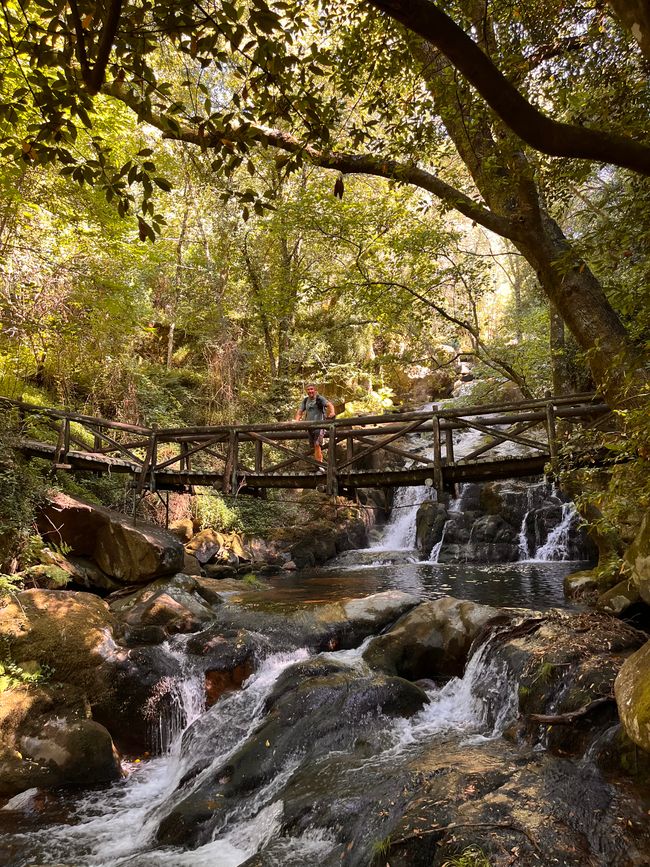
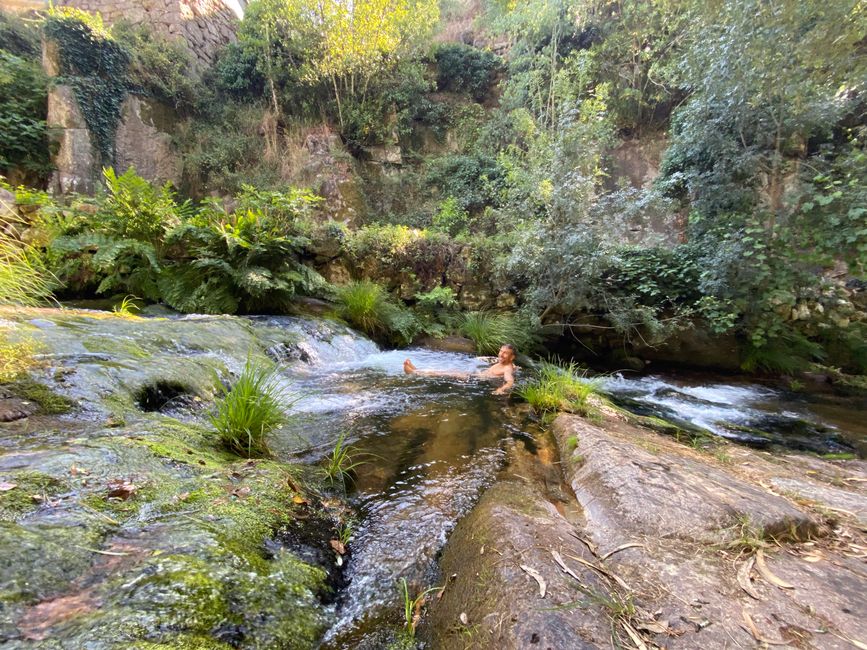
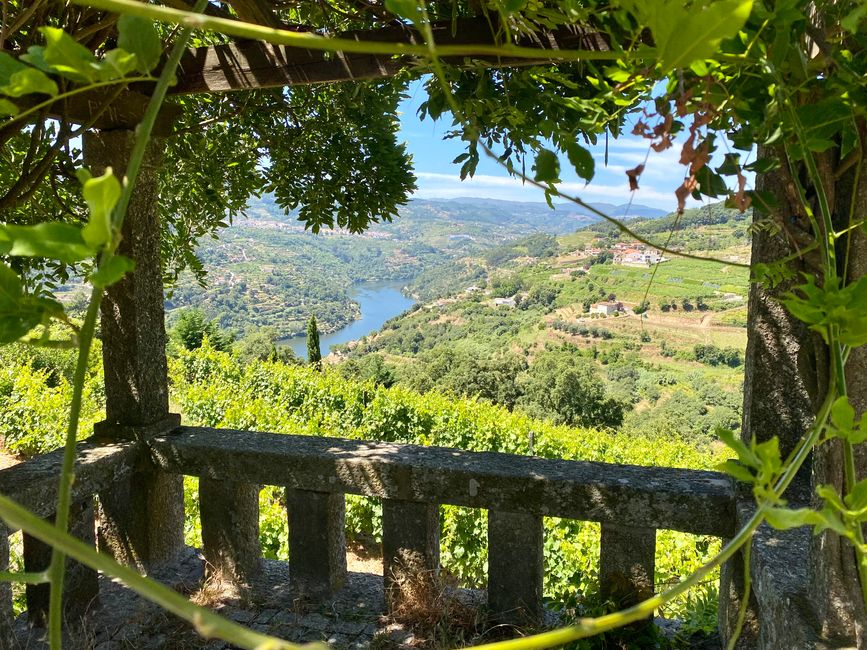
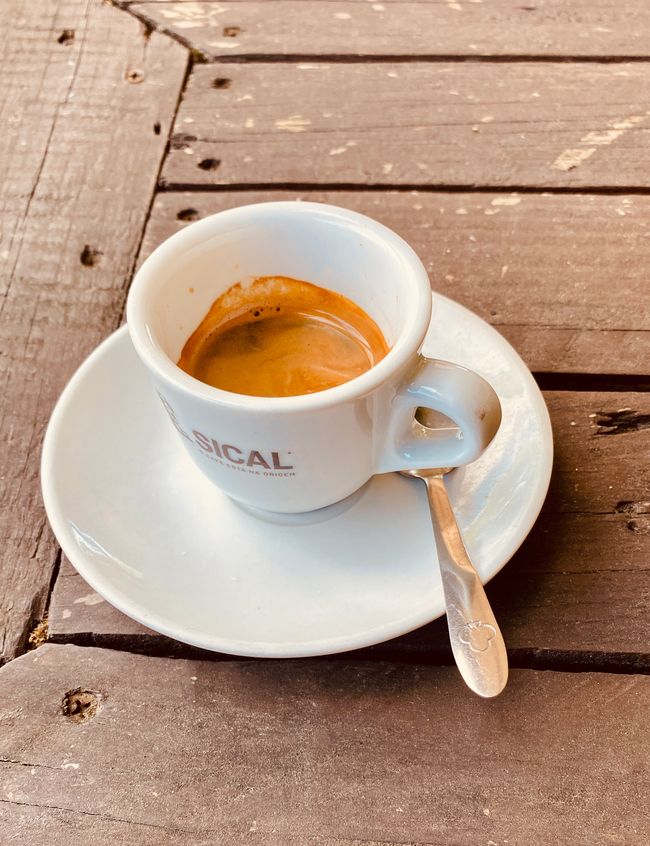
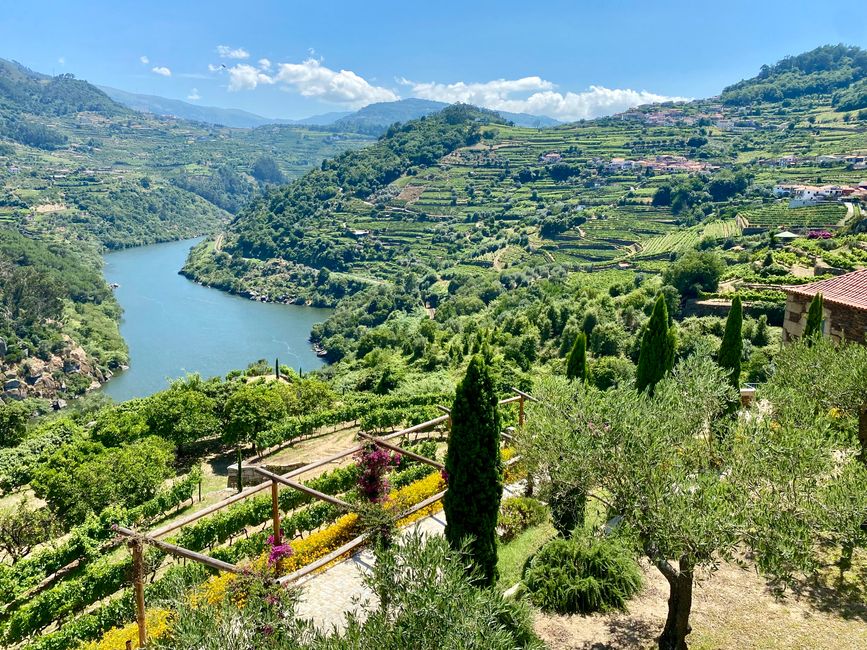
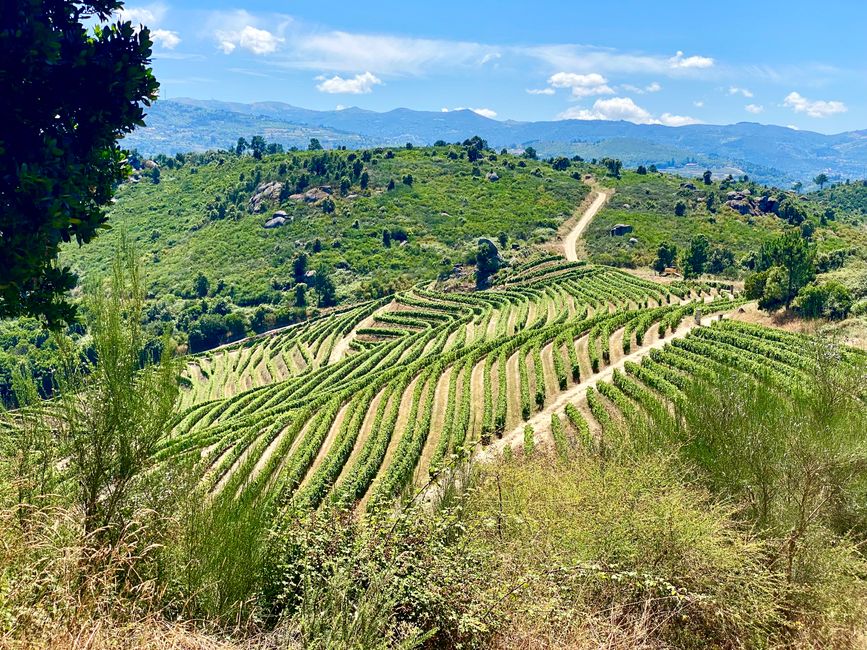
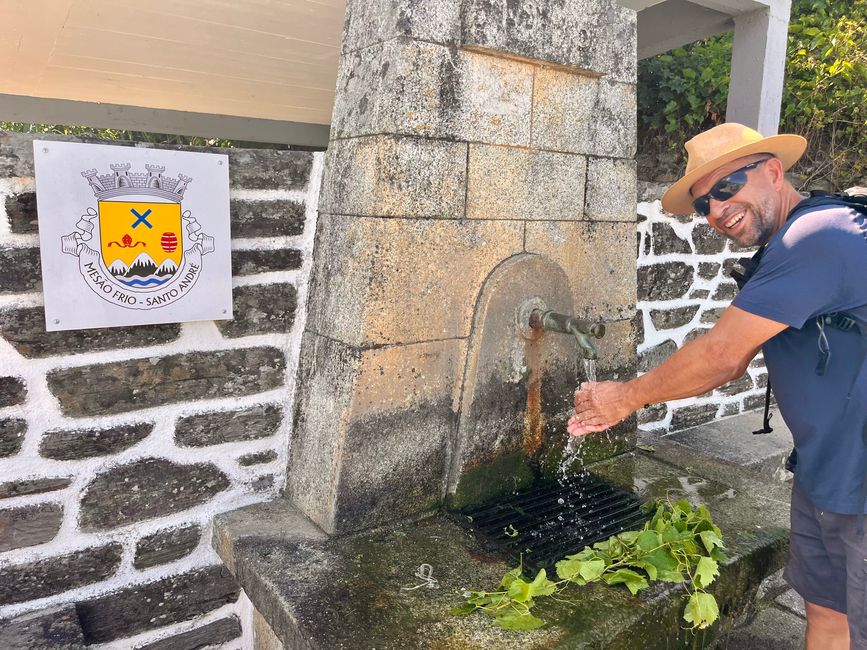
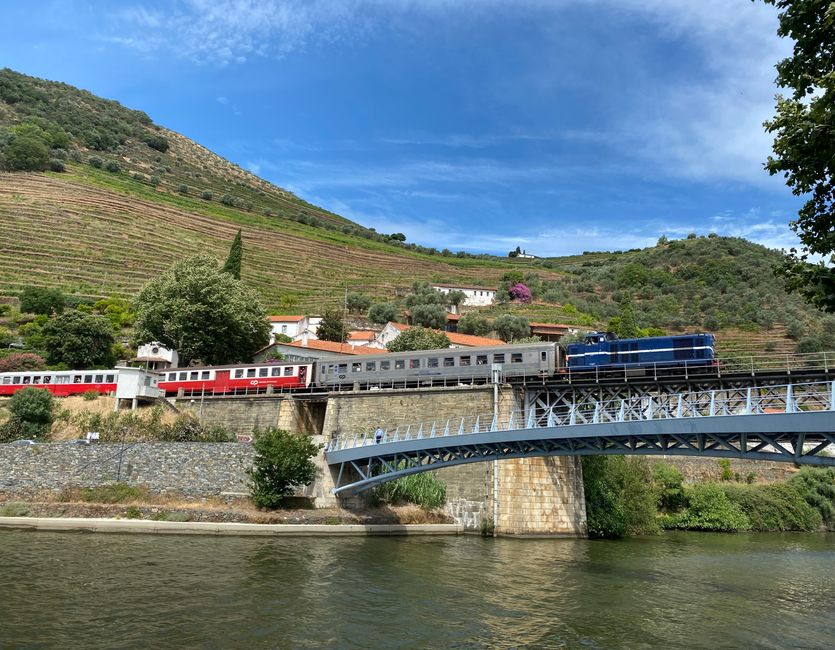
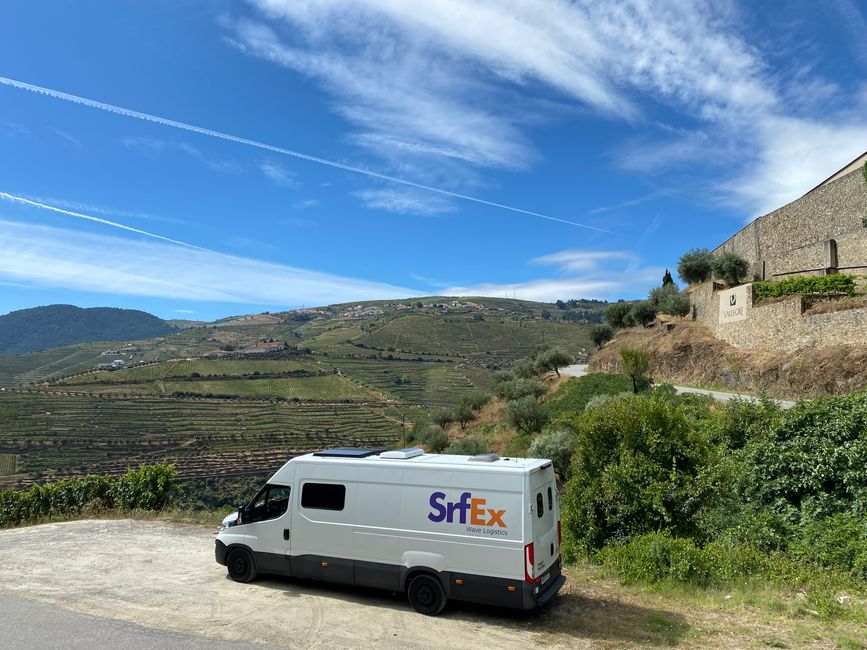
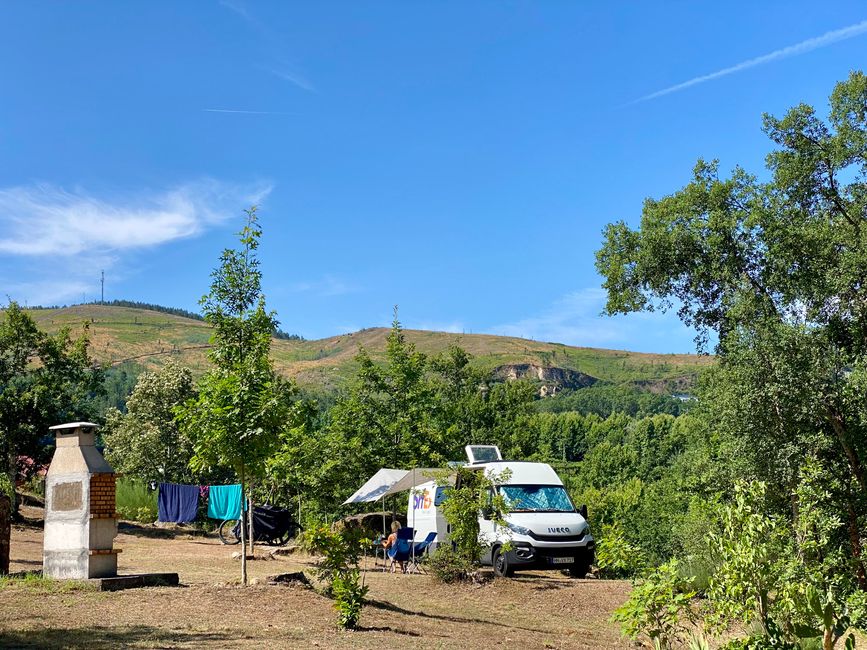
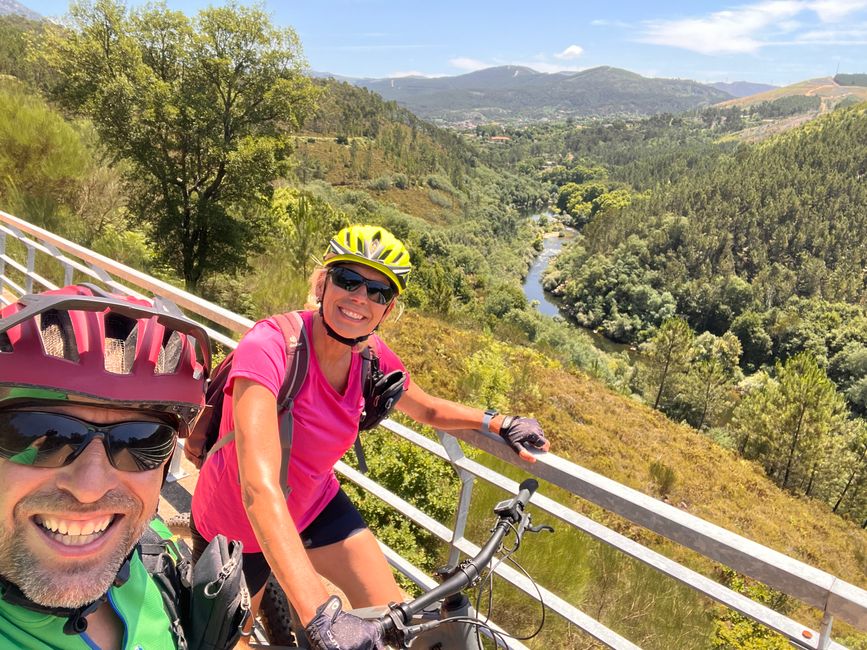

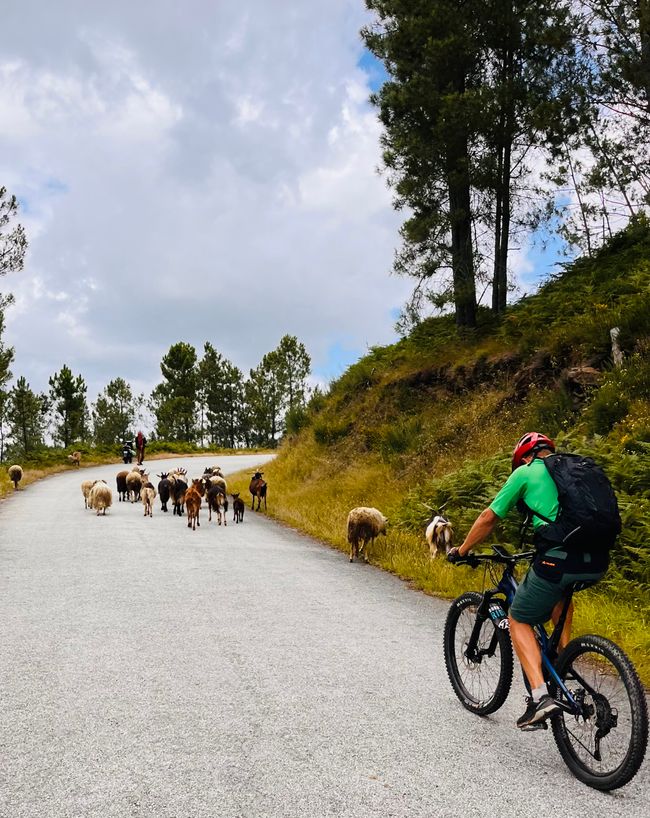
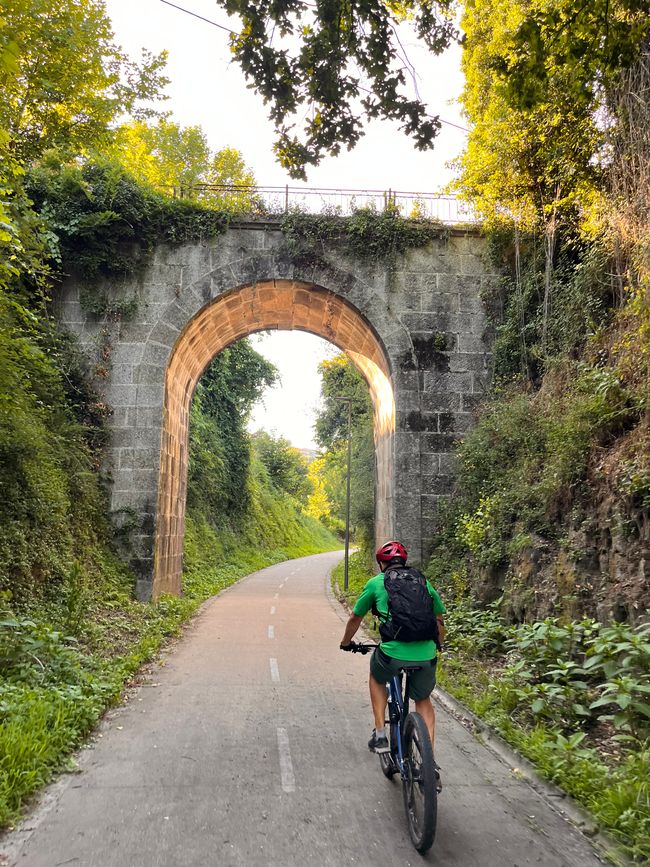
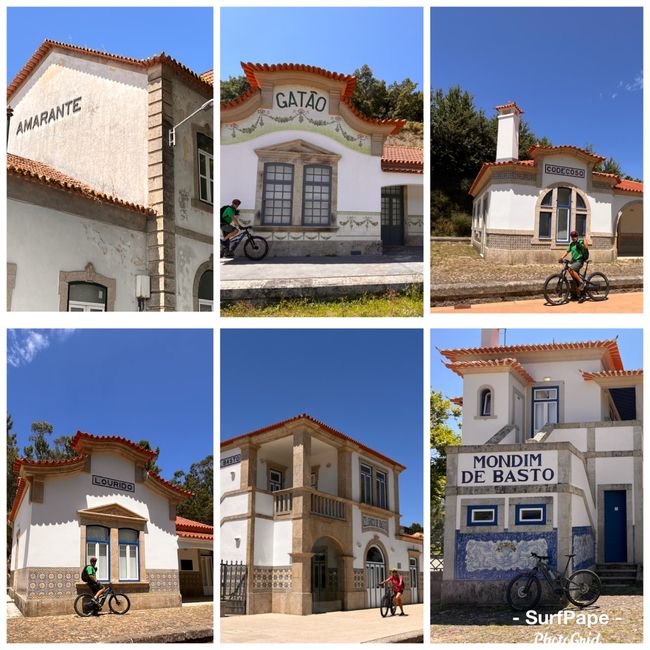
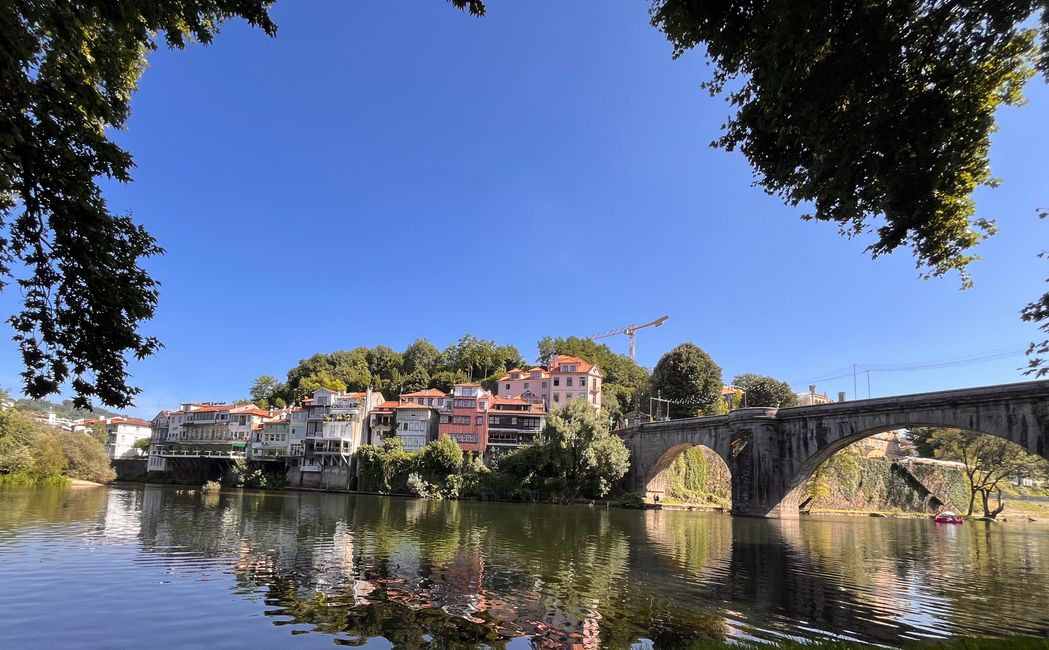
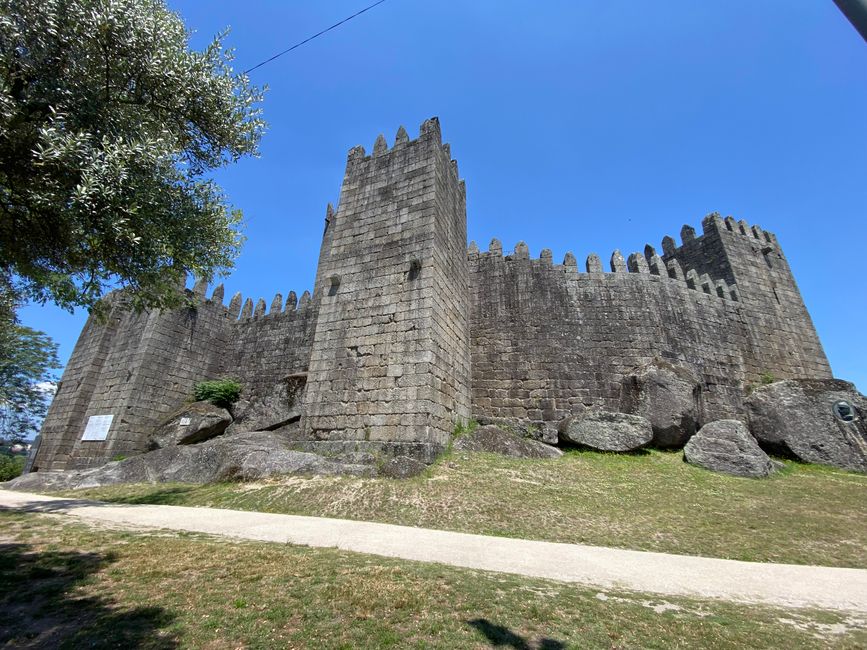
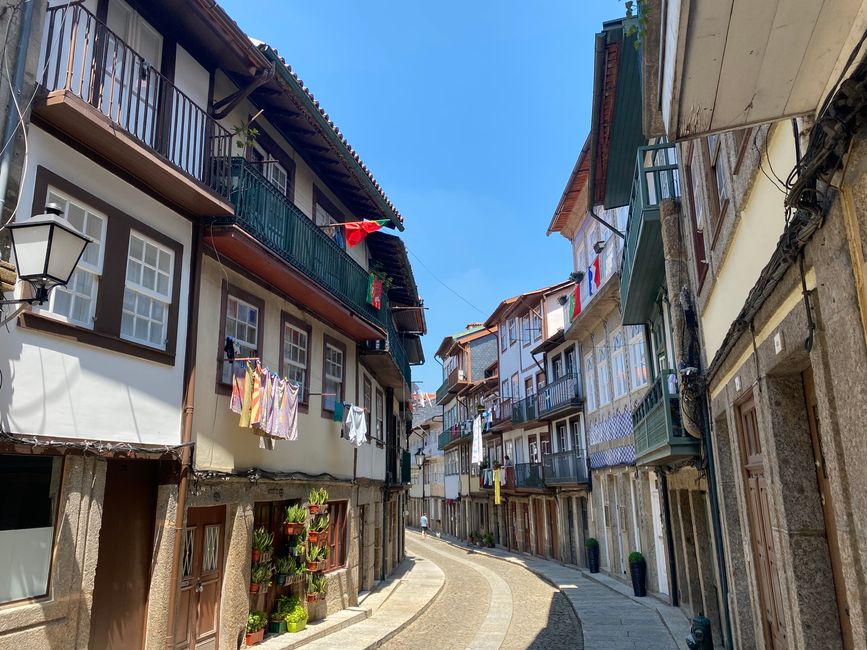
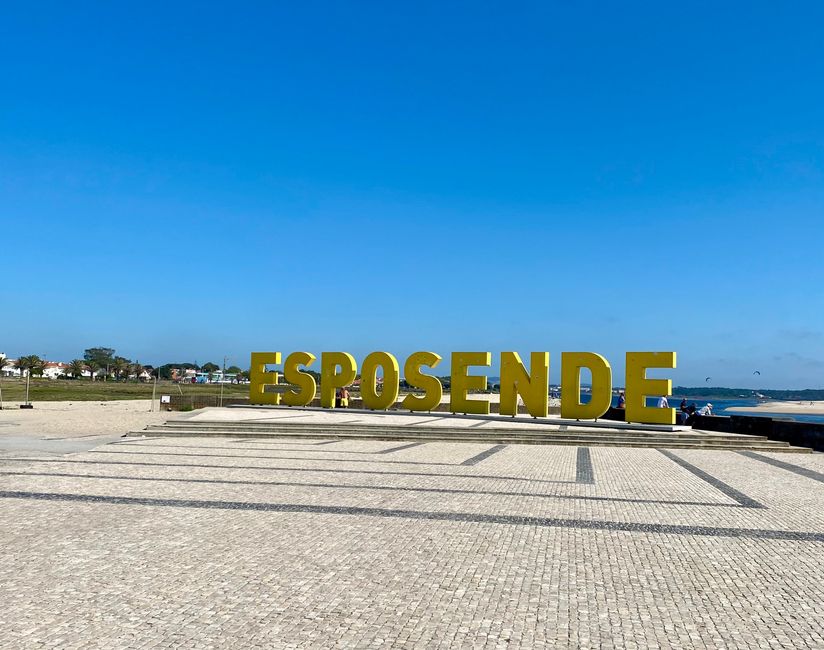
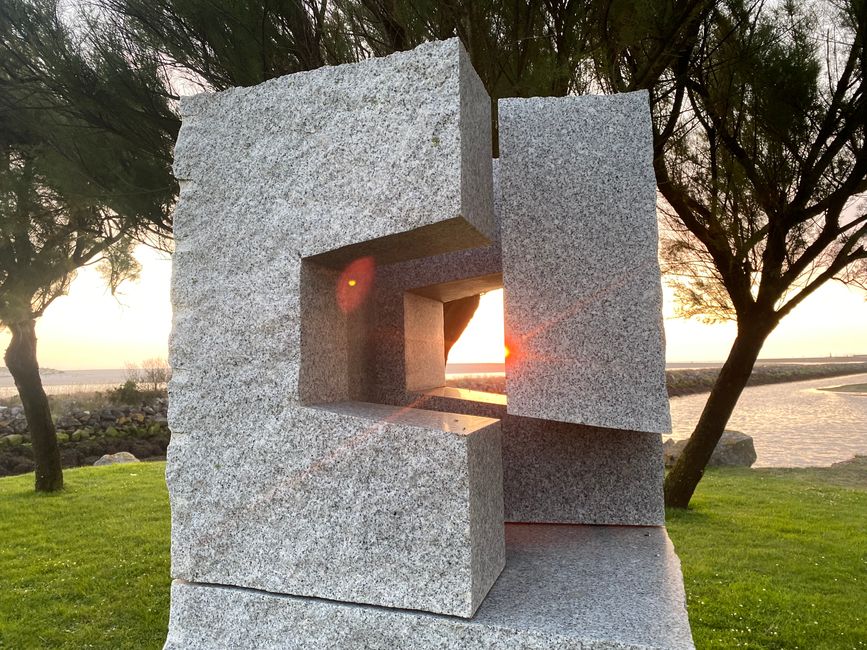
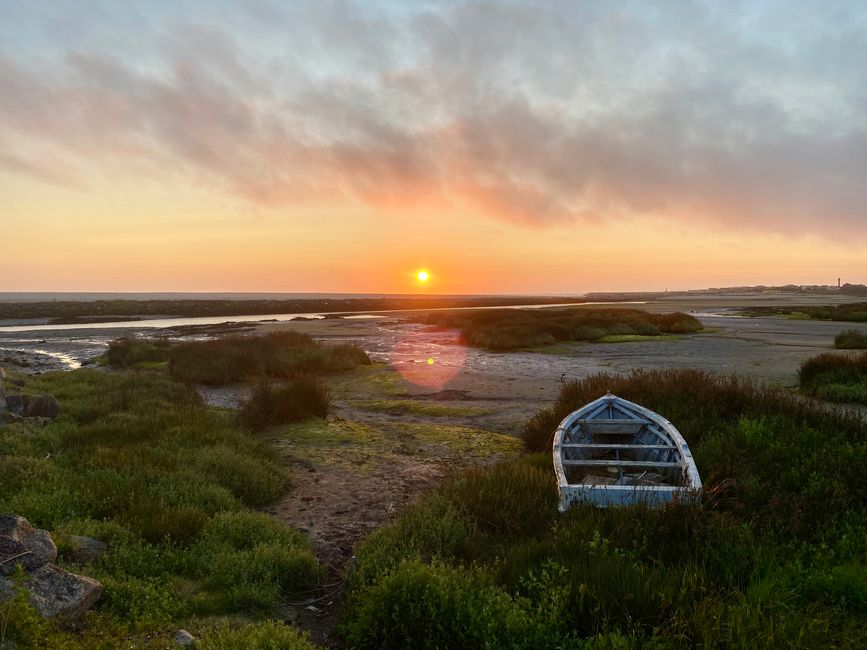
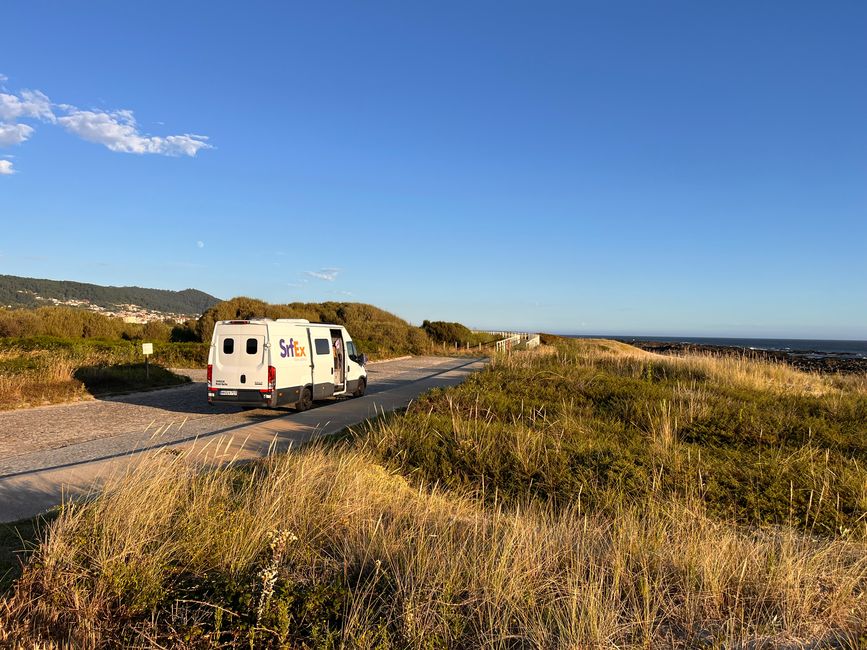
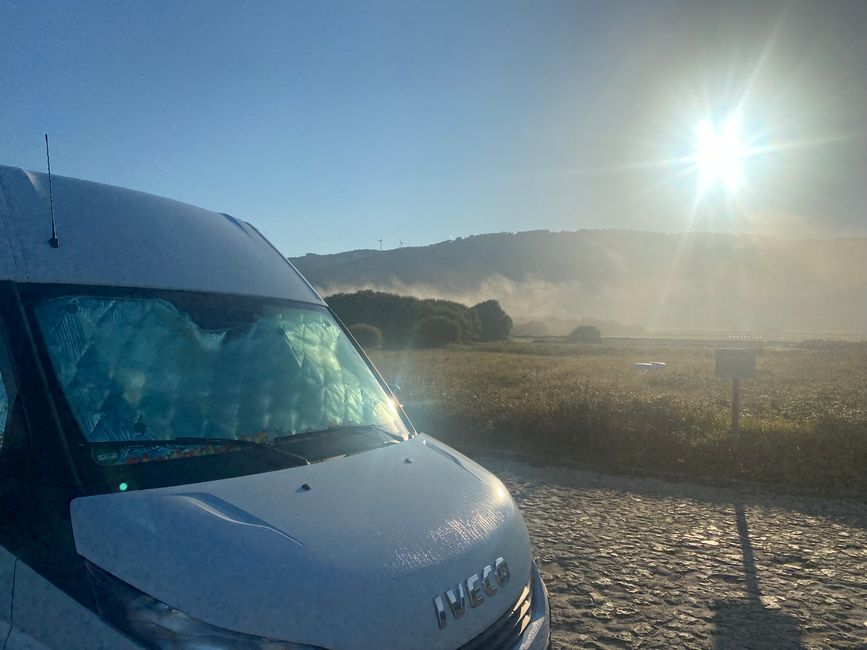
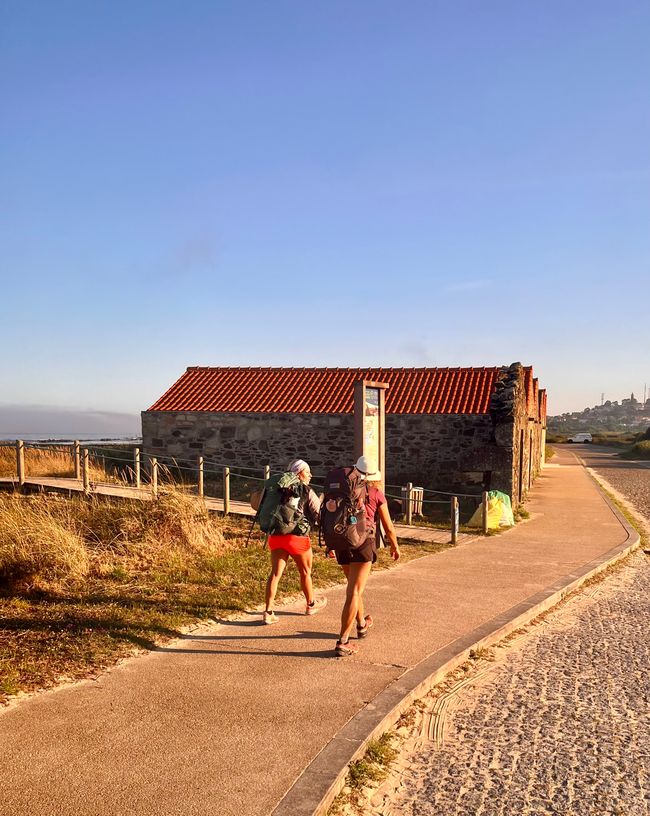
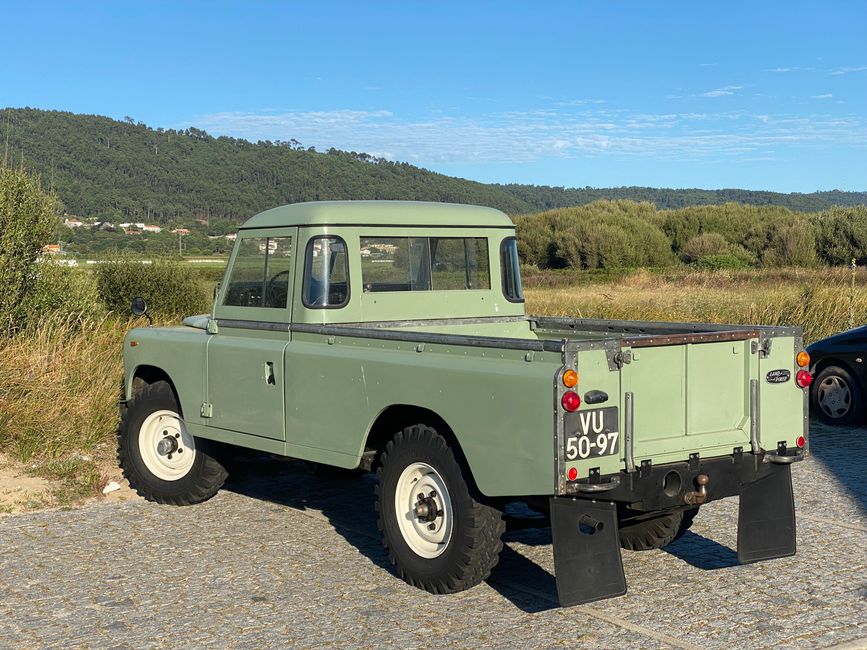
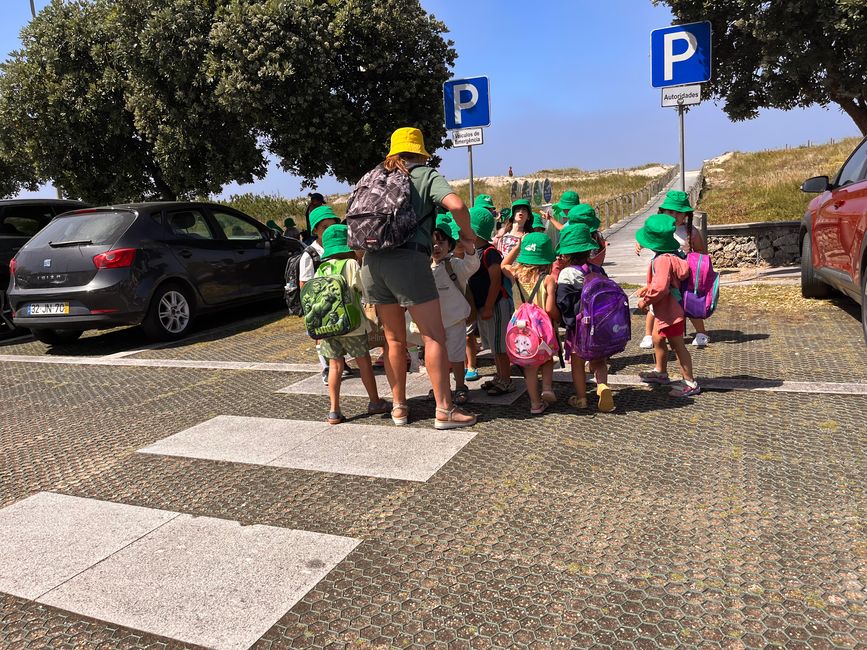
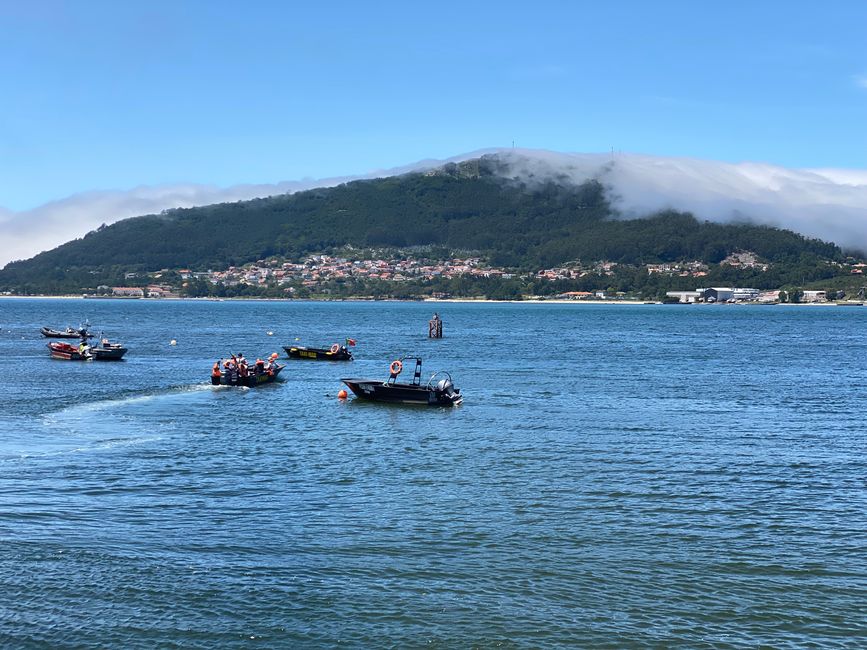
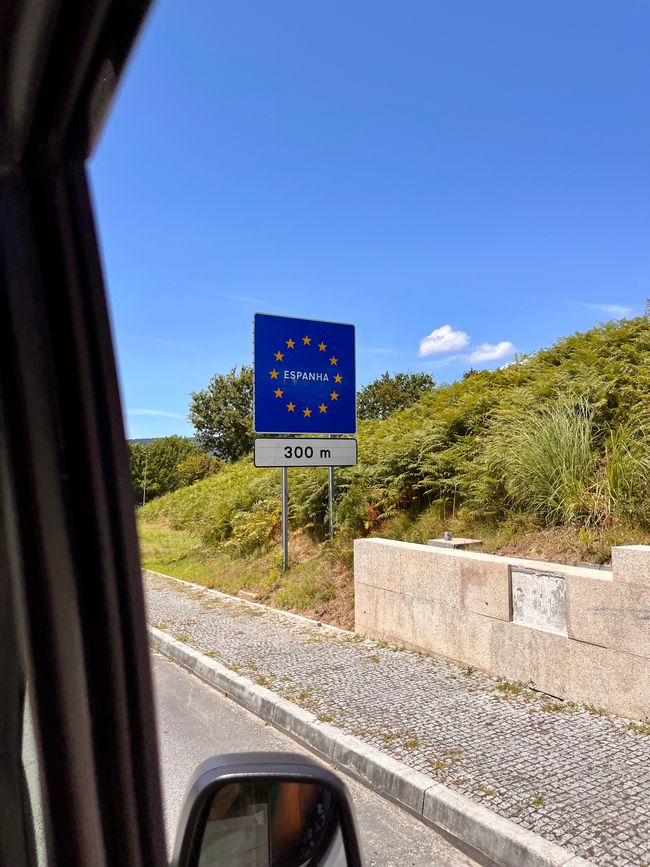
Претплатете се на билтенот
Exciting days lie ahead: We are getting another visit from home! Julia and Ingrid, two friends of Susi, are visiting us for a week in Portugal. At the same time, the quarterfinals of the European Football Championship are taking place, and so far, things have looked pretty good for the German team. Of course, we are also cheering for the Portuguese! On the evening of July 5, we pick Julia up from Porto airport and drive with her from the terminal to the beach in less than 10(!) minutes to await the arrival of Ingrid, who arrives at midnight. With the sliding door open, we can look at the sea on one side and, on the other hand, experience the elimination of the German and Portuguese teams live through our VPN connection.
Nevertheless, life goes on! For the next week, we have 'classic vacation' plans with our two guests. They have rented a small holiday cottage a little south of Furadouro or Ovar. The super nice landlady has agreed that we can park and stay overnight with Betty in the driveway. Unfortunately, Betty doesn’t quite fit in, so we’ll be parking in a flower-decorated bay along the quiet residential street for the week. Apparently, that's completely fine with the neighbors. Next door lives a truck driver, who greets us with a handshake after a few days when he comes home. Well, just trucker to trucker...
The next day, we drive with the rental car (Betty has a week of recovery time) to Agueda. Agueda is known for its colorful city center, where entire street sections are adorned with colorful umbrellas and garlands that sway in the wind. It looks fantastic in photos and selfies and gives the otherwise somewhat drab city a wonderful flair.
Classic beach days are of course planned as well. However, there are often strong winds and, due to the high waves, swimming is prohibited in many areas, so we'll mostly be strolling along the beach. During a stop in Torreira, we accidentally stumble upon a huge gathering of youngtimer mopeds and small motorcycles, rumbling loudly over the promenade. A splendid spectacle, predominantly featuring two-stroke engines. By the way, you can often see well-maintained and cherished young and old timers with two and four wheels in Portugal.
A special highlight of our holiday week is certainly the city of Porto, which we visit twice. The first time, we booked a tour on a sailing boat that sails from the marina at the mouth of the Douro up the river to the city center (with a little motor assistance...) and then makes several circles in front of the picturesque Ponte Dom Luis bridge. We even make a small excursion into the gentle, but noticeably choppy waters of the Atlantic Ocean. All this with a glass of port wine, snacks (included), and knowledgeable guidance. In the morning, we also visited the largest street market in Portugal, which is over 1 km long, in Espinho. From live ducks, to incredibly cheap fruits and vegetables, to shoes and clothes for little money, it has everything! We let ourselves be carried away by the colorful market atmosphere and buy a little something here and there.
For the visit to Aveiro, the so-called Venice of Portugal (grossly exaggerated!), I drop out and dedicate myself to our travel blog 'at home'. Incredible how quickly time passes between two blog entries...
With perfect weather, we head back to Porto. We park in Gaia on the south bank of the Douro. Here are also the large port wine warehouses of Sandemann and Co. The reason is that back in the day, customs duties had to be paid on the north bank in Porto, while on the south bank in Gaia they did not. What a difference a 200 m wide river makes! One enters Porto elegantly over the steel Ponte Dom Luis in 'Eiffel style' from 1881, which can be walked and driven on two levels. To the left is the Cais da Ribeira, a waterfront promenade with beautiful old houses. Behind it stretches Porto's old town, which can be explored very well on foot. Since we have 'vacation', we do crazy things like taking a tuk-tuk for an hour, bouncing and jumping over the steep and uneven streets of Porto. But we see a lot, and the driver shares one or another piece of information about the city, such as that rents north of the Douro are twice as high as on the south bank. This leads to extreme overcrowding in the narrow, old row houses in Porto. We skip the visit to the famous Torre da Igreja dos Clerigos due to the long waiting lines. Another highlight is the Porto Sao Bento train station, which is completely adorned with tile motifs inside. The artist Jorge Colaco spent over 10 years between 1905 and 1916 to artistically paint over 20,000 Azulejos. We end the day in Porto with a bag of extremely calorie-rich snacks, such as Natas with chocolate filling, on a sunny meadow in the middle of the city with a view of the Douro. If you've read our Lisbon blog, you know that we weren't really thrilled with Lisbon. For us, as for many others, the more relaxed and manageable Porto is simply the nicer Lisbon!
The week with Julia and Ingrid quickly comes to an end, and we still haven't bathed together in the Atlantic. This must be remedied! In the gray sea mist, we head into Furadouro under the watchful eye of the lifeguard, who is already looking forward to 'clients' with the yellow flag raised, into the cool Atlantic waves. Thus, the last item on the girls' to-do list is checked off. Bye-bye, you two. It was lovely for you to accompany a part of our journey so nicely!
For us, it means once again breaking camp and setting new destinations with Betty. We have planned the Douro Valley for the next few days. From Porto, the country roads N108 on the north and N222 (a sort of Portuguese Route 66) on the south side of the Douro lead upstream. With every kilometer, the winding but almost car-free path gets prettier and more delightful. It takes a while for the vineyards to line the mountain slopes. There are indeed similarities with the Mosel Valley. It is brutally hot outside. At the Parque de Lazer do Ribeiro on the Douro, we discover a picturesque waterfall with excellent swimming opportunities in the cool, crystal-clear water. We spend the night in the small town of Resende, situated high above the river, with a beautiful view of the Douro Valley bathed in the evening sun. The next day we continue up the Douro Valley. Around Mesao Frio, we undertake a 10 km hike in the scorching midday heat (how typical for us...) with nearly 500 meters of elevation gain. We go up and down through the vineyards and later along the Douro. Along the way, there is a delicious Bifana (a warm roll with thinly sliced, marinated pork), chips, and two non-alcoholic beers for a bargain price by German standards. Before continuing, we take advantage of a public drinking water source (the tastiest water ever!) to fill our water containers and get a nicely cold (very cold!) shower in the washroom behind it. We then spend the night somewhere in the vineyard. After a short visit to the town of Pinhao, where the Douro river cruise ships start their journeys, we leave the beautiful Douro Valley.
The path now leads us northwards. After a brief stop in Vila Real, we drive directly through the Serra de Alvao National Park, a limestone mountain landscape that reaches over 1,000 in altitude. Snow-covered roads in winter are not uncommon here. Corresponding videos exist on Youtube. Road signs warn of slippery roads, but it’s summer and not over 2,000 m like on Teide, where things got a bit dicey for us (see travel blog Tenerife). At the foot of the national park, we set up our base camp in Mondim de Basto for a few days and treat ourselves to a camping site once again. On the outskirts, there is a charming campsite. Everything is a bit older but well-maintained, affordable, and just what we expect from a campsite. Although it's already mid-July, alongside a handful of permanent campers, only a few travelers are passing through. We feel a bit sorry for them. We also notice here that the Portuguese are not exactly world champions in marketing their business activities. From Mondim de Basto, we undertake two MTB tours. One takes us through the national park. The other, along a disused railway track high above the Tamega river, which has been painstakingly developed into a bike and hiking trail over more than 40 km. The turnaround point of the tour is the town of Amarante on the Tamega river. It’s hot, and thankfully we brought our bathing suits. Overall, we cover nearly 120 km and 1,600 meters of elevation on our bikes over both days, which is quite exhausting in the heat, but both tours take us through very impressive landscapes. We encounter almost no other bikers or hikers along the way, which is quite surprising.
As usual, after a few days inland, we are eager to get back to the sea! Through the city of Guimaraes, we head towards the coast. In Guimaraes, Portugal's first king, Alfonso I, was born in a fortress that still stands today. Guimaraes was Portugal's first capital and is considered the 'cradle of the nation'. After a stroll through this very beautifully laid out city, our next goal is the coastal town of Esposende. From here, it's only about 50 km to the Portuguese-Spanish border. Our last days in Portugal are approaching! Esposende lies at the mouth of the Cavado River. Even here, despite being peak season by German standards, everything is still relaxed and not overcrowded. In the evening breeze, a few kiters are showing off their skills at the mouth of the river. There's not enough wind for windsurfing, and it's also too shallow. We easily spend the night in a parking lot in the city by the riverside, with a view of the dunes. The next day, we spend another day at the beach in Esposende. Used to the usually cold water of the west coast, we are surprised by the many bathers who stay in the water for so long. When we ourselves jump into the cool waters, we are pleasantly surprised and estimate the water temperature to be around 20°C, instead of the usual 16-18°C. We have no explanation for why this is, as the water gets colder again further north (spoiler). Before we head off the next morning, we visit the omnipresent Chinese shop in Portugal (a sort of local Amazon retailer). We find everything we need, from underwear to mosquito nets.
We spend our last night in Portugal all alone on a lonely beach road a few km north of the well-known town of Viano do Castelo. In the evening, we enjoy the breathtaking sunset, and in the morning, we wake up to the typical thick sea mist of the west coast. The sea is not visible. Only slowly does the sea mist clear up. As we open the sliding door, two hikers walk past our bus, wearing backpacks and attached scallops. Of course, they are Germans, greetings from Hape Kerkeling.
Now there are only a few kilometers left to the Spanish border, which is formed here by the Rio Mino. The river is very wide at its mouth, and a bridge isn’t found until much further inland. For this reason, small boat companies in the little village of Caminha have specialized in transporting pilgrims across the Rio Mino in small open motorboats, where it is about 1 km wide. This reminds me of the song 'Don’t Pay The Ferryman' by Chris de Burgh... In earlier centuries, one could be very fortunate to reach Santiago de Compostela unscathed and unrobbed. On July 19, we cross the bridge into Spain after more than two months on the road in Portugal. Adeus Portugal! Bienvenido Espanha!
Conclusion about Portugal: Initially, we didn’t feel at home in Portugal (see travel blog Portugal/Algarve, a cold reception for us!), but over time we have warmed to the land and its people. Portugal, we will return!
On the road: 179 days
Total distance traveled: 9,830 km
TO BE CONTINUED
Претплатете се на билтенот
Одговори (6)
Martin
Ihr werdet NIE wieder arbeiten können glaube ich :)Sabine
Wundervolle Reiseberichte! Ich freue mich so sehr mit euch! Alles liebe 🙏🫶🦋💕Jeanett und Patrick
Wir lieben euch!
Ihr macht das ganz toll. Weil ihr so liebe Menschen seid, dürft ihr das alles genießen. Wir gönnen es euch von ganzem Herzen.
Ach naja…. Etwas neidisch sind wir manchmal…. Aber das ist positiver Neid, den darf man haben 🥳😂😂😂😂
Macht weiter so tolle Reiseberichte, sind sehr professionell…… und interessant! Danke von Herzen! ♥️ Lieben Drücker aus Hummel Hummel 🐝 Nadja
Grüße 🥰Andreas
☺️ viele Grüße 🙋♂️Schön, von euren weiteren Erlebnissen zu lesen. Weiterhin gute Reise und wir freuen uns schon auf den nächsten Bericht! 🤙🏻
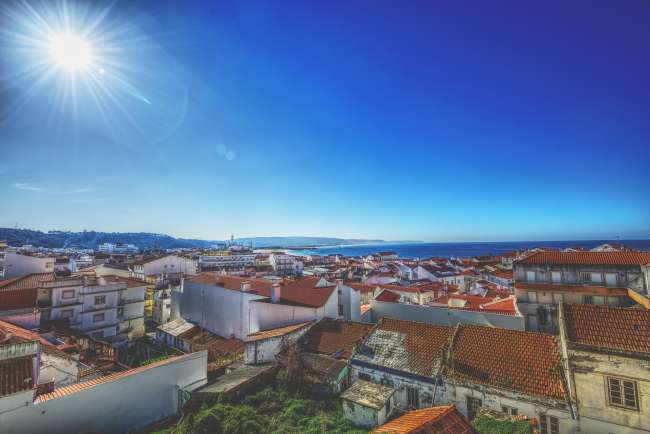
Извештаи за патување Португалија
